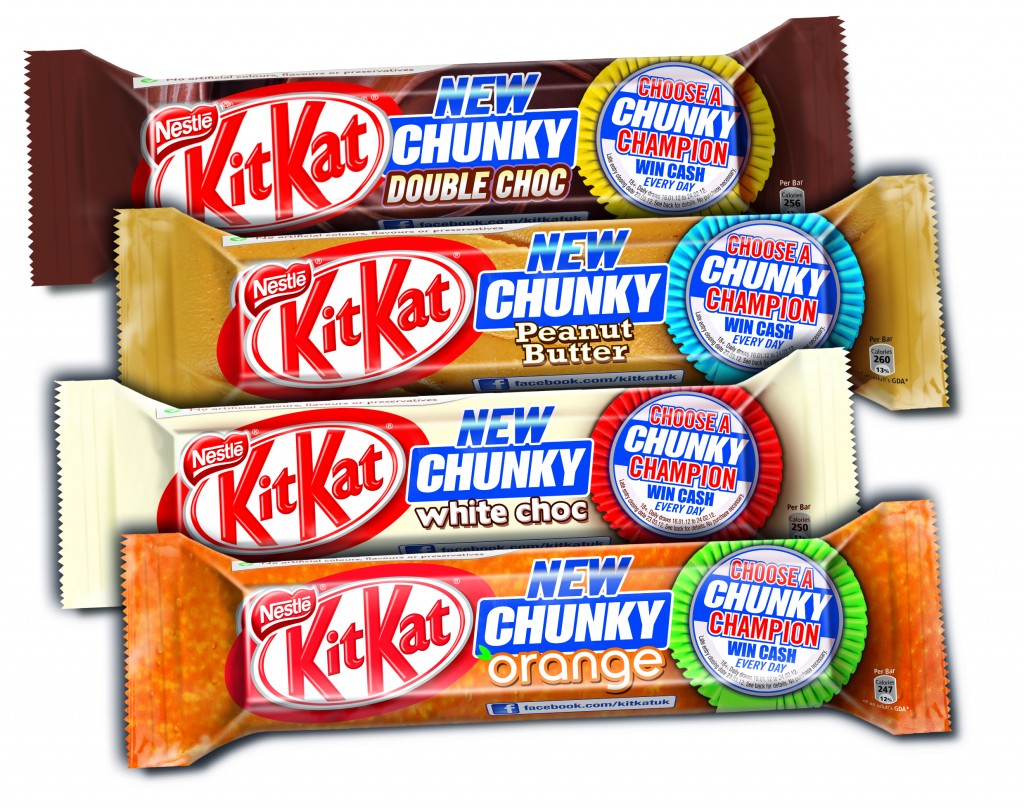A KitKat
marketing campaign in 2012 involved the launch of four limited edition
flavours. A previous post explained the persuasive techniques employed in this
campaign in terms of scarcity- a product tends to be perceived as more valuable
if it is less available.
The author
of that post also mentioned the tendency for supermarkets to run out of a
particular flavour, which may start a relentless hunt which culminates in stocking
up when you finally track it down. Research has indicated that when a great
deal of effort goes into obtaining an object, we justify this expenditure by
increasing our liking of it. So, the lengths we go to when searching for that
bar of KitKat cause us to consider it even tastier, making the whole thing more
worthwhile.
An
interesting study by Aronson and Mills (1959) illustrates this effect.
Participants who engaged in a severe initiation to join what was revealed to be
a boring discussion gave a more positive opinion of the discussion than those
who engaged in mild or no initiation. Thus, the amount of effort spent on the
initiation lead to attitude change in these individuals.
Another
aspect of the campaign invited consumers to vote for their favourite flavour on
Facebook, and the winning one was to become a permanent product. Firstly, the
use of social media works to the brand’s advantage. Media exposure has been
shown to positively influence campaign and brand recall (van den Putte, 2009),
meaning it’s more likely people will be aware of, and remember, these limited
edition flavours as well as KitKat overall. There is no doubt the campaign has
enjoyed success on Facebook, with the KitKat page receiving a huge growth in
likes and becoming one of the top growing pages of that period.
Having
consumers actively vote for their favourite flavour also serves to enhance
liking in other ways. For example, people tend to develop their self-concept
based on their own actions (Bem, 1972). That is, our actions tell us a lot
about our beliefs, values and attitudes, so in voting for our favourite flavour
we are reflecting on how much we like the product and inferring that we have a
positive attitude towards it. We are also making a commitment for ourselves and
others to see, and we are likely to act consistently with this (probably by
buying yet more bars).
To demonstrate,
a study carried out by Cioffi and Garner (1996) showed that making a decision
actively results in more commitment to it than making the same decision
passively. Participants indicated whether they were willing to volunteer for an
AIDS awareness project on a form in either an active (affirming it on two
items) or passive (skipping two items) way. Those who made an active choice took
a more extreme position toward their decision, even weeks after, and were more
likely to turn up to the project if they had volunteered. In keeping with the
self-perception view, the results showed that a more active display of choice
lead people to attribute their decision to their own traits, attitudes and
tendencies to a larger degree. Therefore, we can see how a simple click on
Facebook could increase our liking of the chosen flavour and keep us going back
for more long after we’ve made our decision!
References:
Aronson, E., & Mills, J. (1959). The effect of severity of initiation on liking for a group. Journal of Abnormal and Social Psychology, 59, 177-181.
Bem, D. J. (1972) Self-perception theory. In L. Berkowitz (ed), Advances in experimental social psychology, 6, 1-62.
Cioffi, D., & Garner, R. (1996). On doing
the decision: effects of active versus passive choice on commitment and
self-perception, Personality and Social Psychology Bulletin, 22, 133-147.
Van den Putte, B. (2009). What matters most in advertising campaigns? The relative effect of media expenditure and message content, International Journal of Advertising, 28, 669-690.
Charlotte Chan


Really interesting.
ReplyDelete